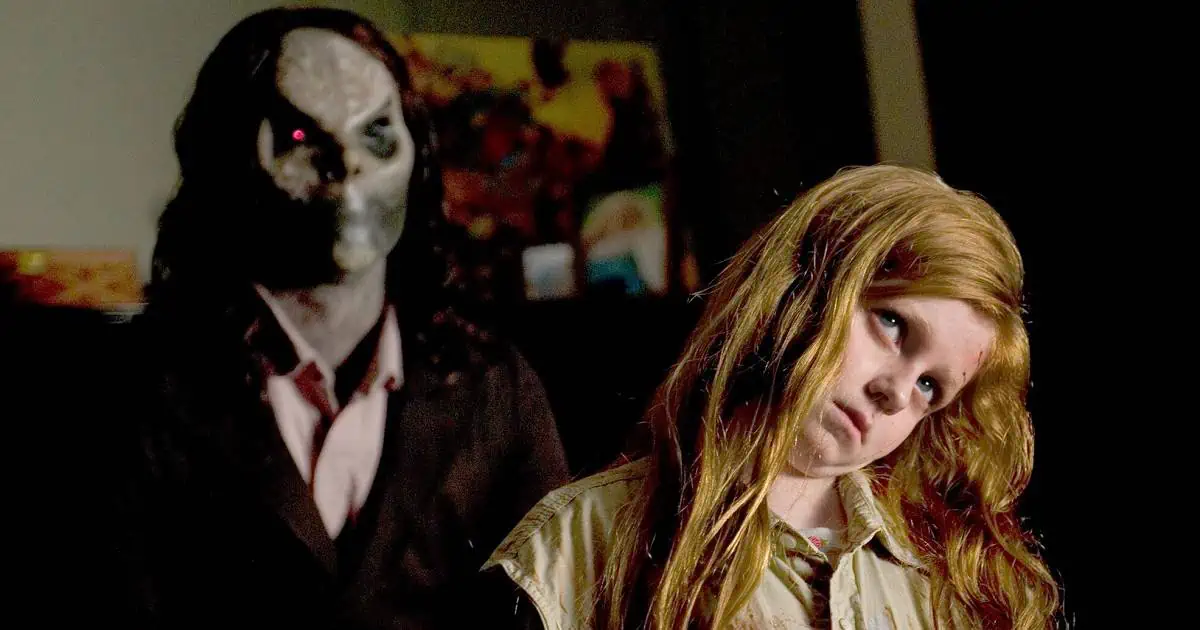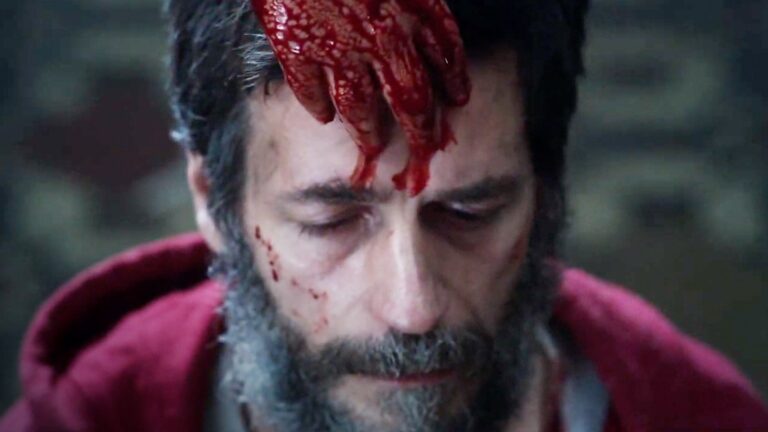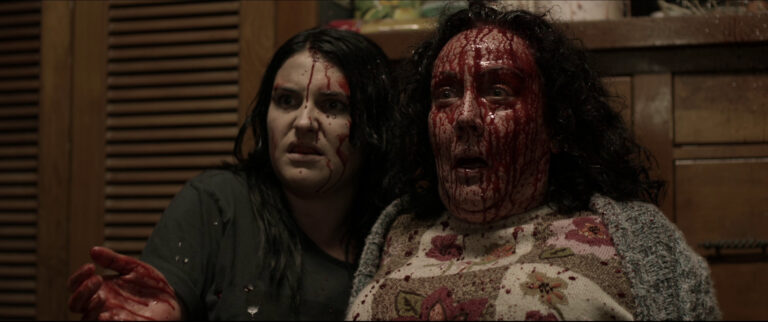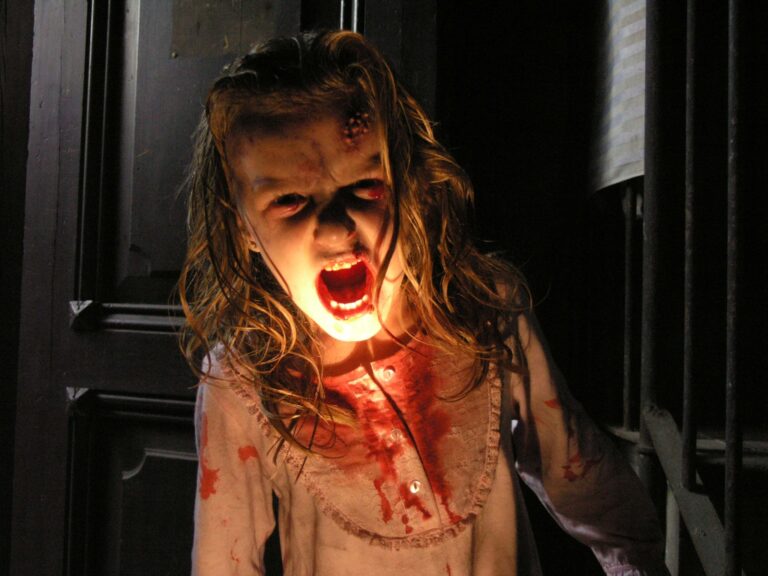Review of Sinister (2012)
It’s been ages since I watched a horror film that truly earned its keep, nailing everything from story to visuals, camera work, sound, and acting. Sinister (2012) isn’t flawless—its plot has hiccups—but its strengths overshadow any stumbles, crafting a chilling experience unlike the half-baked horror flicks I’ve slogged through. Most either botch the story or fumble other elements, sometimes bombing entirely. Sinister delivers raw, gripping dread that lives up to its name. Let’s dive in.
Story
Ellison Oswalt and his family move into a house with a dark past—an unsolved murder case. On day one, the local sheriff warns Ellison to leave, hinting the town will shun them for stirring old wounds. Ellison, a true-crime writer, refuses; he’s hell-bent on penning a career-defining book about the case. In the attic, he finds old film reels and starts digging into the mystery. Strange things soon plague the family: his son Trevor sleepwalks naked, screaming inside a cardboard box; his daughter Ashley sketches victims—mostly missing kids from murdered families hanged on a tree. As eerie events mount, Tracy, Ellison’s wife, learns of the house’s history through Ashley’s drawings and begs to move. Ellison digs in, convinced this book will be his legacy.
The deeper he investigates, the weirder it gets. Ellison spots ghostly images of missing kids in the shadows, invisible to him at the time, and a sinister figure in the films. He contacts Professor Jonas, who links the footage to an ancient pagan deity tied to ritual killings. One night, attic noises lead Ellison to find the projector running, showing a hanging scene with the killer’s face staring back. Terrified, he burns the films and flees with his family to a new home. But the horror follows. Among their unpacked boxes, Ellison finds another reel. A deputy calls, revealing a pattern: families move into murder houses, uncover the truth, relocate, and die. Five cases form a straight line—Ellison’s family is number six.
Notable Plot Details
The film explains Bughuul, a pagan god who devours or possesses children’s souls to commit atrocities. One nagging question: how do you stop him? Ellison asks Jonas if burning the films could work, but Jonas sidesteps, ending the chat. No solution exists. Fleeing to a new house only hastens death—Bughuul lures new victims to cursed homes, striking once they leave. If a house hosted two murders, it’d break his trap, so the six cases (including Ellison’s) form a chilling chain. The deputy notes this pattern, showing Bughuul stages past killings for new tenants to find before claiming a child’s soul. But how did the first family encounter Bughuul? Did he seek them out, or did they stumble into his web? The script doesn’t say.
The fifth case, the Stevenson family’s hanging, went cold—no detectives pushed further, or they hit a wall, so the town shelved it. Why? Was it too baffling, or did resources dry up? Ellison, driven to write his book, uncovers the films and digs deeper, only stopping when the terror overwhelms him. Another puzzle: how did he buy a notorious murder house so cheaply? He tells Tracy they can’t afford to leave, hinting at financial strain. Unsolved crime scenes rarely sell unless dirt-cheap, suggesting the town, stumped by the case, let the house go. The sheriff’s warning—sincere yet ignored—backs this, as does the townsfolk’s fear that new residents curse everyone.
The films are no ordinary reels—they’re portals to another realm. Burning them does nothing; Bughuul, a gatekeeper between spirit and mortal worlds, uses the projector as his “door.” Destroying it changes nothing—you’re still doomed. Possessed children lose all family ties, obeying Bughuul’s command to slaughter their kin. After filming their crimes, they vanish from the footage, reappearing only when the next victim watches. Why doesn’t Ellison, knowing this, alert the police? Even after quitting, he could’ve sent the reels to investigators. This feels like a script gap.
Despite these questions, the plot is near-airtight for horror. Most films today lack this polish—either the story’s weak, or other pieces crumble. Sinister’s scripting stands tall, delivering what lesser horrors fumble.
One glaring logic flaw: why move the whole family into a known murder house? Ellison’s obsession with his book doesn’t justify risking his kids and wife. He could’ve stayed solo, parking his family with Tracy’s sister until the project wrapped. The sheriff’s warning makes his stubbornness odder—ignorance might excuse it, but foreknowledge doesn’t. This “family-in-haunted-house” trope is horror’s bread and butter, yet here it strains belief.
Tension
I’d rate the tension a five—decent, not dazzling. Horror’s intensity depends on its subgenre. Action-horror prioritizes thrills; spiritual horror leans on visuals and mood; supernatural horror demands mystery and effects. Sinister, blending supernatural and psychological dread, doesn’t chase high-octane pacing. Weak plots need tension to compensate, but Sinister’s strengths lie elsewhere. Its slow-burn unraveling of Bughuul’s curse outshines the need for constant escalation. You’re less focused on a ticking clock and more on Ellison’s descent into terror. It’s not pulse-pounding, but it’s gripping, making it a standout in today’s cluttered horror scene.
Masterful Cinematography and Atmosphere
Sinister nails its visuals and mood. Darkness cloaks 80-90% of the film, with 80% of shots framing eerie settings and 20% capturing actors. This keeps you braced for scares—ghosts could lurk anywhere. Jump scares are sparse but surgical, hitting where they count, not spamming to mask flaws like weaker films do. Those lean on constant jolts to hide thin dread; Sinister doesn’t need that crutch. Its shadows tease scares that sometimes don’t come, toying with your nerves. A looming jump scare might fizzle, only to strike when you relax. This dance—hinting at horror without overdelivering—is the film’s sharpest edge.
Scenes of the five ghostly kids in the dark chilled me to the bone. You expect them to pounce on Ellison or spark a brawl, but they don’t. Their presence is a quiet omen, signaling doom for his family, which hits harder than any fight.
Peak Horror Intensity
Sinister’s scare factor is among the best I’ve seen. Few films satisfy me this fully, and fewer match its dread. As noted, the cinematography and atmosphere fuel its terror, crafting a visceral fear that’s rare. Most horrors try and miss; Sinister lands every punch.
Stellar Soundtrack
A horror film’s score needs to unnerve without overwhelming. Too creepy, and it drowns the visuals; too loud, and it feels cheap. Sinister’s music strikes gold—eerie, restrained, and perfectly timed. Each note fits its scene, amplifying tension without stealing focus. It’s as flawless as the rest, cementing the film’s excellence.
Overall
Sinister (2012) is a horror triumph, blending a tight plot, haunting visuals, and a killer score into something truly unnerving. Its few flaws—like Ellison’s baffling choice to stay or script gaps about Bughuul’s origins—fade against its craft. The tension simmers rather than boils, but the atmosphere and raw fear more than compensate. In a genre littered with duds, Sinister stands as a must-watch, delivering chills that linger long after the screen fades.








